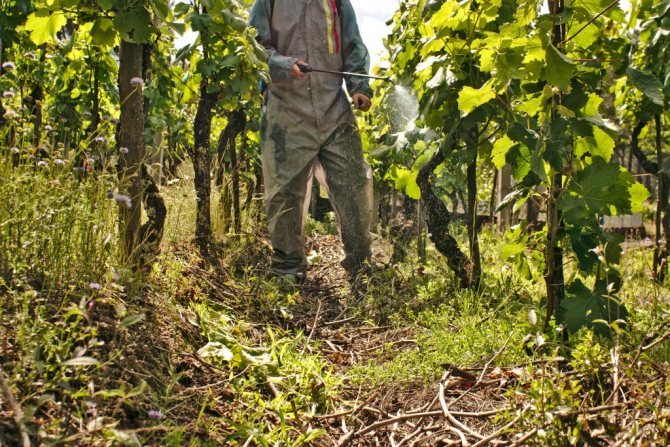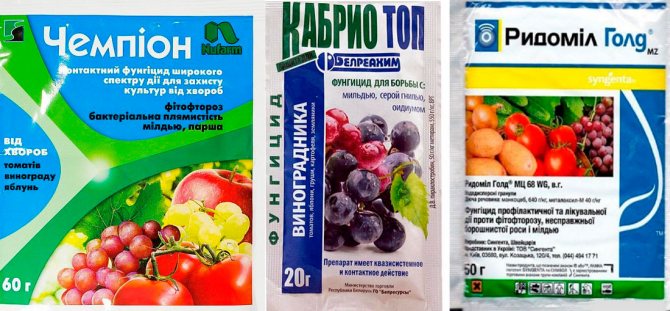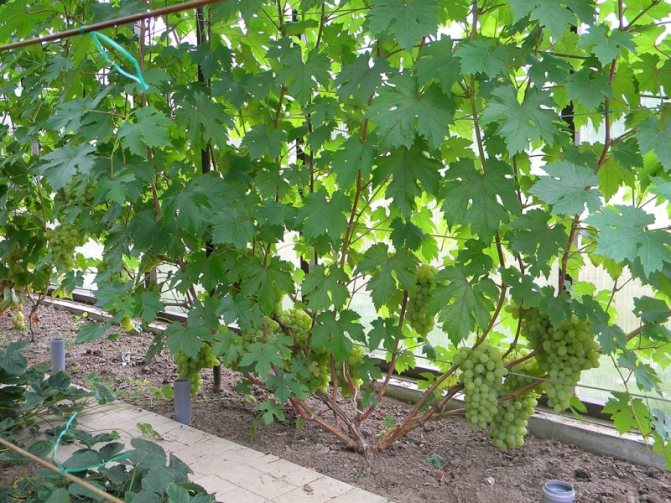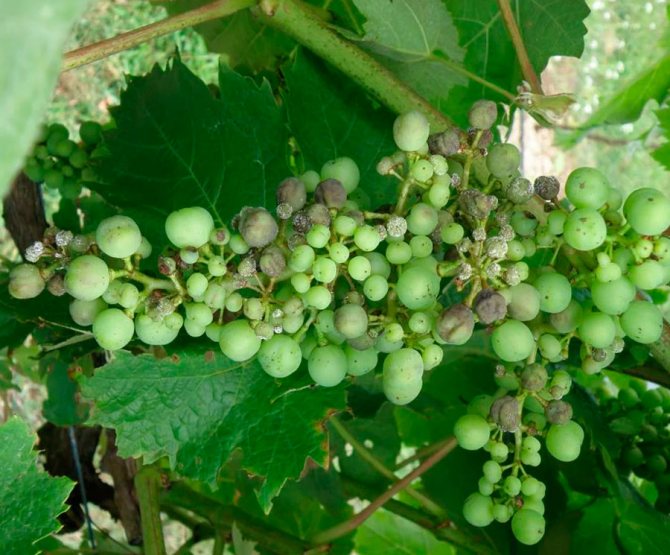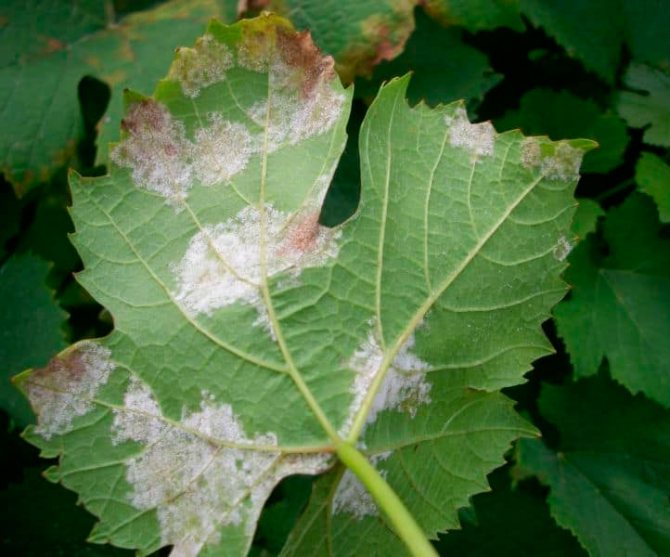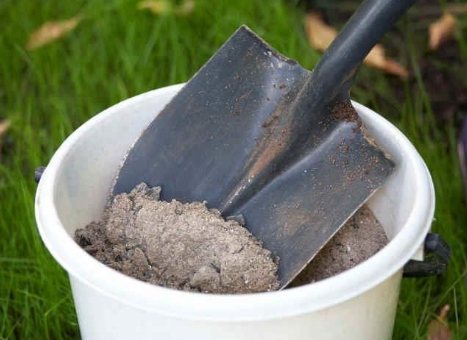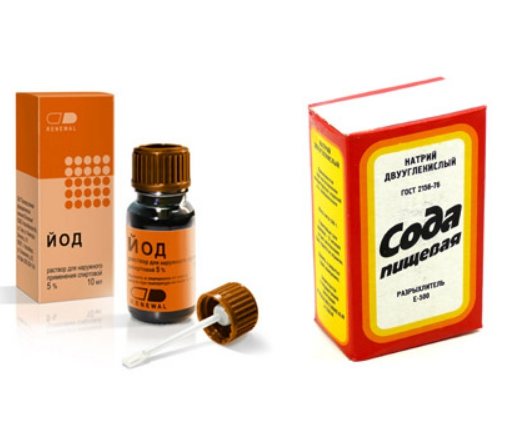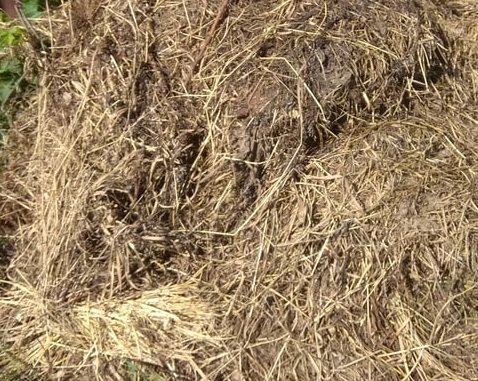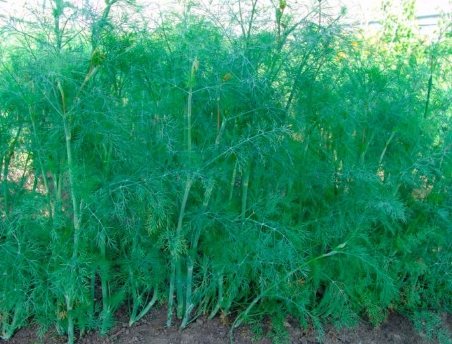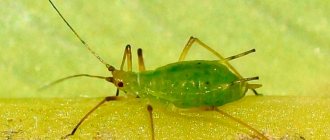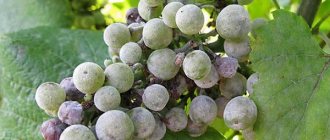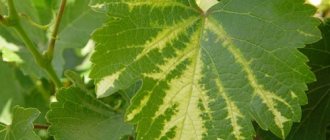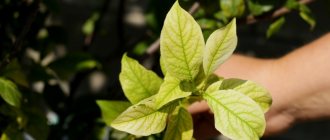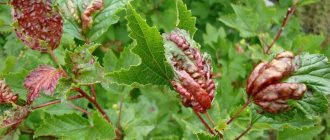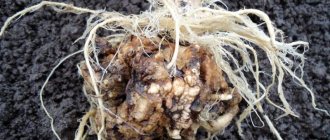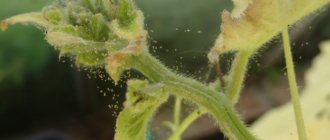Mildew disease (mildew), or downy mildew of grapes, is considered the most common and dangerous for European varieties of culture. All parts of the bush located above the ground are affected by this disease. Mildew begins to develop due to a pathogenic fungus - plasmapar vitikol. It was brought to France from North America, and this happened in 1878. After some time, this pathogenic fungus could already be found in all European vineyards. It was because of this disease that the decline of European viticulture was observed in the late 19th and early 20th centuries.
Mildew signs on grapes
On foliage: Primary signs of mildew: well-visible yellow or brown spots grow on the leaves of grapes, which seem oily in appearance. On young foliage, they are about the size of a penny, they look like circles, on old foliage, the areas affected by the fungus are angular and “stretch” along the veins.
After a while, a mycelium in the form of a white cannon appears on the back of the spots with spots.
Gradually, the infected leaves curl, curl.
Synonyms for the name mildew on grapes are: downy mildew of grapes, Plasmopara Viticola, Plasmopara viticola Berl. et Toni, mildew, as well as transcription options: mildew, mildew
On bunches: The inflorescences become unhealthy yellow. The brushes curl up and turn brown. Unformed ones dry out.
Fruits that have outgrown the size of a pea, but still do not have good sweetness, acquire a bluish color, then turn brown and look like a deflated ball with clearly visible wrinkles.
The mycelium develops equally well on any part of the vine.
Visual characteristics
Let's figure out how you can identify mildew, recognize it at an early stage. Here are the characteristic signs you need to pay attention to:
- On the front of the leaves, yellow spots of an oily consistency appear.
- A mealy whitish bloom appears on the back of the leaf.
- First, the leaves are affected, then similar signs spread to both shoots and berries.
- The leaves begin to shrink, after which they begin to gradually crumble.
- Grapes stachala become bluish, then begin to be brown and shriveled.
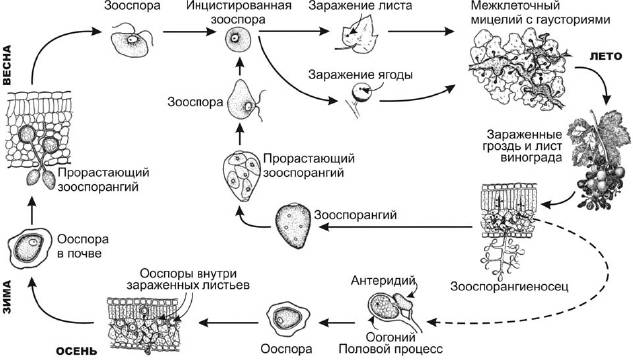
But if all these problems did not lead to anything terrible, then everything would be fine. But, alas, they are still being led. In particular, the following happens:
- The harvest is lost. Most often, not all, about half, but still you obviously will not count the berries on your bushes.
- Plants do not tolerate winter well, seriously weaken.
- The quality of berries is significantly reduced, wine, jam and other processed products are far from so tasty.
- Cuttings for reproduction are not so easy to prepare.
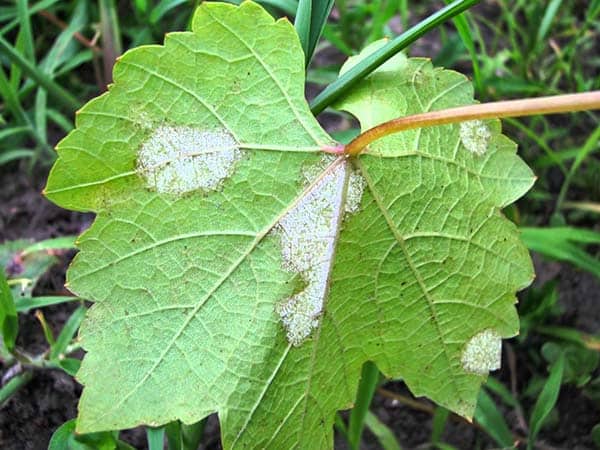

Photo
You can find out in more detail how grape mildew looks like in the photo below:
And the next photo describes in detail the propagation cycle of downy mildew:
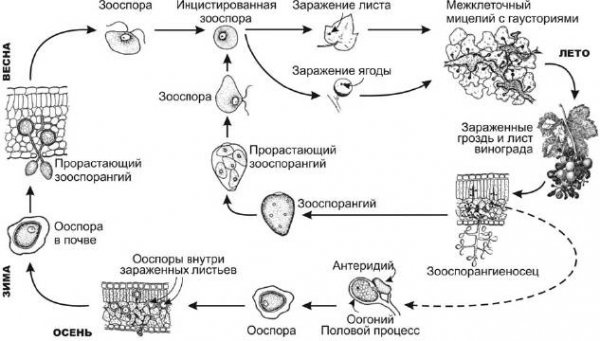

Vulnerable varieties
It is not recommended to plant several grape varieties in areas with high humidity:
- "Cardinal";
- "Shahinu Iran";
- "Kishmish Radiant";
- "Special";
- "Rizamata"
In conclusion, we note. You can plant any grape variety if preventive measures are taken in time to combat any diseases of the grapes.In this case, you can reliably protect your vineyard from fungi and spores and get a good harvest of your favorite sunny berries. It is important not to be lazy, but to be attentive and responsible to your work.
Causes of the disease
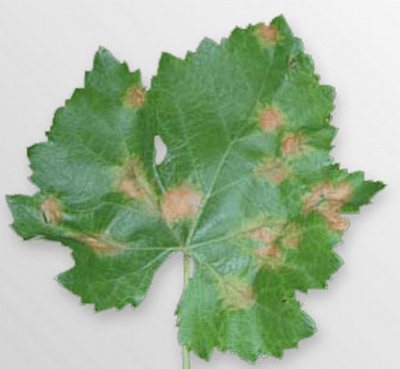

Mildew is a formidable, rapidly spreading disease in European vineyards.
Develops due to fungus Plasmopara Vitikola, which appeared in Europe in 1878 due to non-compliance with quarantine measures for American seedlings of wild grapes imported to French farmers, which had natural resistance to phylloxera.
For two years, signs of mildew infection in vineyards were detected not only in many vines in the south of France, but also in the plantings of Balkan and Caucasian winegrowers.
Fungal zoospores overwinter in the ground. They fall on the vines together with the spray formed from the raindrops hitting the ground.
Secondary infection from a diseased area to healthy ones occurs both with rain and with the help of wind.
From the moment the spores hit the leaves until the first signs appear, 4 days pass if the air temperature is above 24 degrees.
Read about different grape diseases here.
Preventive measures
Mildew prevention is a key issue for viticulture.
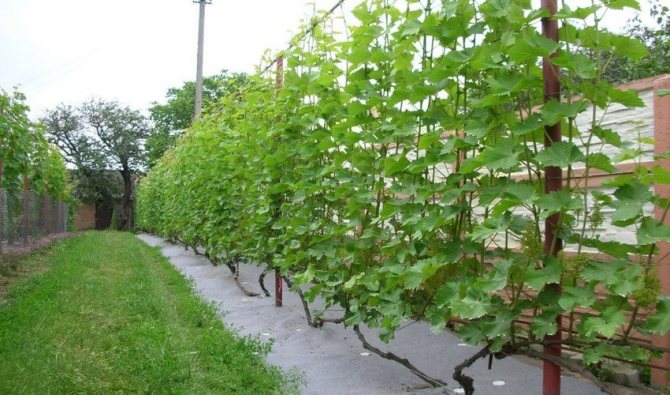

Disease prevention measures are varied and should be used in combination:
- The vineyard should be located in a well-ventilated area to avoid the accumulation of moist air. For the same purpose, it is necessary to carry out pinching and chasing of vines.
- Vertical drainages for irrigation, thanks to which less excess moisture remains in the surface soil.
- Cancellation of night watering and foliar feeding in the rainy season.
- In the fall, fallen leaves must be burned.
- In spring, it is recommended to cover the soil with a foil or a layer of straw or ash.
- Timely pruning.
- Weeding regularly.
- Planting dill around the bushes.
- Balanced mineral nutrition (with an emphasis on magnesium, potassium and phosphorus).
- Selection of varieties with a disease resistance gene.
Did you know? In Japan, the technology of prevention of mildew and other fungal infections using electrolyzed water (E-water) has been used for many years. This solution is pH neutral and not harmful to grape crops and humans. In 2020, the United States announced the use of NaOClean technology.
Methods of struggle and methods of treatment
Only timely preventive measures give the desired effect, since when mildew spores get into the leaves, it is incredibly difficult to fight the disease.
Necessary procedures: Eradicating spraying of the soil under the vine should be carried out before the first spring rain, as soon as the vines are tied and the soil is loosened. As a measure to combat grape mildew, nitrophen is used, diluting 400 g per ten-liter bucket of water.
After treating the soil with a disinfectant, the soil is mulched. On the one hand, this will give an additional protective layer between the vine and the fungus wintering in the ground, on the other hand, it will soften the impact of raindrops on the ground.
Treat grapes for mildew by foliar spraying with a systemic fungicide Ridomilwhen 4 leaves appeared on the vine.
Back-spraying the crests of future bunches with Bordeaux liquid before the formed brushes begin to bloom will help save the ovaries and protect them from mildew until they ripen.
Process folk remedies
| Wood ash Dilute 1 liter of wood ash in 10 liters of water... Mix well and leave to infuse for three days. Strain the solution... Dilute with water in a ratio of 1:10, add 3 tbsp. l. liquid or grated laundry soap. To stir thoroughly. Carry out processing... Try to cover all surfaces, it is better to apply the composition in the early morning or evening |
| Iodine, baking soda, and potassium permanganate Take a liter of warm water, dilute 4 tbsp. l. soda, add 40 drops of iodine there... Top up with water to 10 liters, then add a little potassium permanganate until pale pink. Add some liquid soap before using... Process in the same way as described in the paragraph above |
| Mature hay Collect a bucket of rotten hay. Pour warm water to the top... Place in a warm place for about a week. During this period, hay sticks will actively multiply there. Dilute with water before use in a 1: 3 ratio... To process grapes in the morning or in the evening, hay stick is a natural at once mildew, which destroys the disease |
| Dill Plant dill around the vineyard in the spring... You can sow during the season so that there is always greenery around. This is a preventive measure... There is debate about its effectiveness, but you can try, especially since there is nothing complicated in this option. |
Prophylaxis
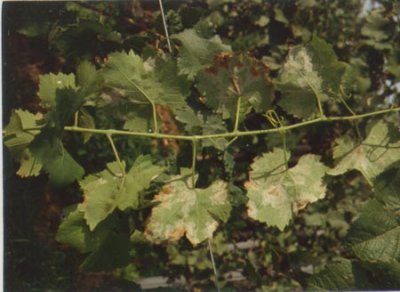

To protect grapes from mildew: In the fall burn all affected foliage, overgrowth (if the disease has already manifested itself on the vine).
For sanitization, the soil is sprayed: iron or copper sulfateBy making the composition according to the instructions, these folk remedies help fight grape mildew and slow down the spread. In the spring, the soil is sprayed with a fungicide immediately after loosening the soil under the grapes.
Even mildew-resistant grape varieties are treated at least twice: first along the first leaves, then along the not yet blooming tassels, after removing excess foliage from the bush (if any).
Avoid overgrowing vines prone to excessive foliage formation. When planting seedlings, make sure that the ridge is not thickened.
Do not plant specimens without mildew immunity if you are afraid that you will not be able to spray them in a timely manner. Make sure your plants get enough potassium.
When mildew appears on grapes in a neighboring area, it is urgent to carry out preventive treatments on your vines, so secondary infection is possible with the help of the wind.
Copper-containing solutions can be replaced with drugs: Ditan M-45, Man-kotzeb, Polycarbacin... This method will help save grape varieties that are sensitive to an increased copper content in protective preparations from mildew.
With a rainy summer, the number of treatments is increased using contact-systemic drugs: Oxyhom, Ridopolich, Mitsu. The permissible number of treatments per season is 8 times.
A month before the ripening of the crop, treatment against mildew is stopped.
Apply proven means
All options are divided into three large groups:
- Systemic drugs, penetrate and create a certain immunity to the disease... These include: Ridomil Gold, Acrobat Top, Acrobat MC, Oksikhom, Poliram DM, Kuprolux, Thanos, Quadris, Cabrio Top, Homoxil, Kurzat, Ordan, Tsikhom.
- Contact preparations, in which the active substance works only on the surface... These include: copper sulfate, copper oxychloride, Bordeaux liquid, Stroby, Delan, Abiga-peak.
- Biological preparations... Much safer than chemical ones, they are used for preventive purposes and when processing plants with ripening berries, since after spraying, you can harvest in a few days, you do not need to wait 2-3 weeks. These include: Fitosporin, Pentafag, Trichodermin, Gaupsin, Planriz, Alirin-B.

